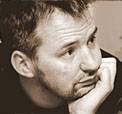To make improvements you will have to make changes. To make changes you will use your understanding of change. Take the time to consider why change happens, how it starts, continues, and stops. It will help you to shape change so it produces the kind of innovations and improvements you want.
From Cradle To Grave - It feels natural that organisations would have a life-cycle that mirrors the life, pimples, wrinkles, and death that every individual experiences. The simplistic view would be that if you can identify the part of the life-cycle, the appropriate actions are obvious. Just manage effort around what is going to happen anyway. You can mother the child, push the young adult, pamper the middle-aged, ignore the elderly and bury the dead.
One of the problems with this approach is that organisations are made by humans but differ significantly from their individual members. Some organizational characteristics have typical patterns but these are not fixed. They don't have to die. They regenerate, transform, and experience metamorphosis.
Change within them depends on ideas not on biological body clocks. Rehab is possible. They can kick expensive habits and ditch dead-beat husbands. They can survive as long as someone feeds them, moving to new sources of vitality like aged rock stars playing on the marry-go-round, or – rather more attractively – like descendants of same family, with each new generation making it's mark, doing it's thing, whether fashion, breakthrough, or updating old traditions for a new world.
Exactly To Plan – Some change happens the way it is intended. Change may bring the benefits that were expected. Believing that it will always bring the benefits desired is the mistake. Even if change happens as planned, the benefits may not be as desired. There is a ripple effect. One change leading to several more, some anticipated, others completely unimagined. They cascade outwards like complex family trees so that the destination is rarely clear at the start of the journey.
It is easy to become locked into a planned pattern of change. This may happen because efforts to bring about planned change were successful. If it worked so well the first time, why not repeat a winning formula?
It may also continue even after failure becomes constant, continual, and chronic. Your colleagues become committed to the plan through bias and group think. With no-one successfully challenging the effectiveness of the plan, the reaction to failure may be to invest more time, resources, and effort in trying to make it work.
Original war doesn't bring peace? Just fight another one but with bigger weapons. Shock and awe your way to greatness. Taxing fuel doesn't slow down consumption? Just keep on taxing but force those who can't afford new, fuel efficient cars to pay yet higher taxes. No new thinking – just wasted effort poured into a flawed view of how to achieve objectives.
Them, Us, and Compromise – A lot of change happens because of discontent with the way things are. Usually, someone somewhere is unhappy with what they're getting and wants more.
It could be shareholders, or customers, your boss, the unions, or someone's spoilt children, luxury loving toy-boy or bling-crazy trophy-wife. Dissatisfaction with the status-quo leads the individual to seek satisfaction by changing the situation.
The problem is that one set of desires often conflict with another set of competing desires about what is best. Part of this is opinion, the same goal with different views on how it can be achieved. Part is conflict because a change may be good for someone and bad for someone else, the goal is the source of disagreement.
Where you have more power than those who disagree, it's likely that the superficial victory will be yours. Just remember that you haven't won the argument. You may need to win the argument to engage imagination, good-will, and talent. Some will actively continue to change your mind, or get your plan reversed. But often, all your comrades and underlings have to do to ruin your shiny new plan is to refuse to believe in it.
Witness the endless internal opposition to reforms of health systems throughout the world. Government cannot mandate improvement unless it engages with the desires of those who work in the health systems and, at the same time, provide a view of the world that is sufficiently motivating to pull people in the same direction. Many politicians are at their weakest at little and big picture – they spend their time in the middle – and it shows.
Survival Of The Fattest – There's a view that evolution, or competition, will naturally lead to improvements. That view is wrong. There is no certainty that what survives is fitter, or better, or stronger, or more helpful than what becomes extinct.
In times of plenty, the competition changes so that everyone survives, and the worst do best because their behaviour is focused on acquiring more stuff rather than contributing. And not everyone in power can notice the difference.
There is a general increase of survival for the species, or company, that is best adapted to its circumstance. But this adaptation may be down to luck. The animal or corporation that survives just happens to have the right combination of size, weight, colour, and abilities.
Animals don't grow tails, fins, or wings deliberately. There was no plan it just turned out that way. The pattern is very similar for the complex processes that lead to particular organisational designs and decisions. Figuring out which part of success is due to good fortune and which is due to good judgement is difficult, perhaps impossible.
What do you do now? Thinking about how change happens, allows you to more effectively craft attempts to make things better. You know better than to over-rely on plans, or life-cycles, and to consider the relative merits of competition and negotiation.
Plans often do not turn out the way you wanted, so unexpected results will occur. Good and bad things will happen that were not anticipated, so stay alert to new possibilities that are outside of your original plan. Identify the differences in opinion that drive change in your situation and consider how they can be shaped to allow progress to be made.
Use differences to improve decisions and challenge assumptions so that what worked in the past, or has been tried in the past, does not trap you. Use your understanding of change to allow you to make changes.

